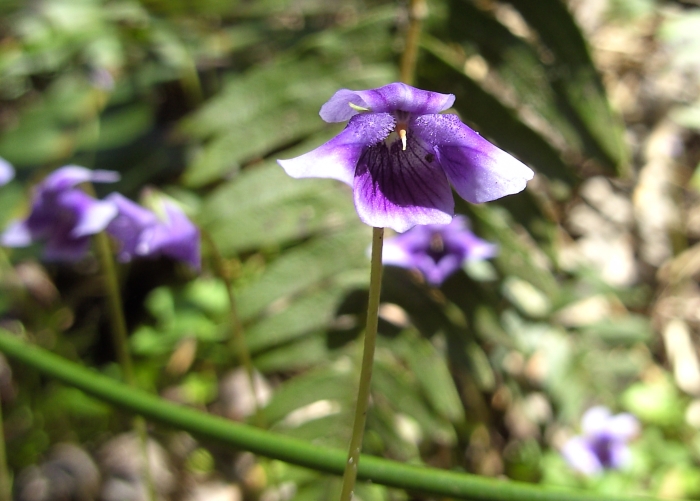Tasmanian Violet
(Viola banksii)
Tasmanian Violet (Viola banksii)
/
/

Ian Sutton
CC BY 2.0
Image By:
Ian Sutton
Recorded By:
Copyright:
CC BY 2.0
Copyright Notice:
Photo by: Ian Sutton | License Type: CC BY 2.0 | License URL: https://creativecommons.org/licenses/by/2.0 | Uploader: Flickr upload bot | Publisher: Wikimedia Commons | Title: Viola_banksii.jpg | Notes: {{Information| |Description= {{en|''[[Viola odorata]]'', Nied, Frankfurt/Main on pear, Germany}} |Source=Own work |Date=2006-04-15 |Author=[[User:Dysmachus|Fritz Geller-Grimm]] |Permission={{self|cc-by-sa-2.5}} }} |



































Estimated Native Range
Summary
Viola banksii, commonly known as Tasmanian Violet, is a perennial herb native to cool temperate rainforests and moist, shaded areas of Tasmania and southeastern Australia. It is a low-growing ground cover that reaches up to 10 cm in height, with a spread that can be quite vigorous in ideal conditions. The Tasmanian Violet is characterized by its heart-shaped leaves that are almost circular with a deep, narrow, v-shaped sinus at the base, and a bright, fresh green color. Its flowers are particularly striking, with a combination of purple and white hues, and they bloom from early spring to late summer, providing a long season of visual interest.
This species is valued for its ease of cultivation and adaptability to various soil types, provided they are well-draining and kept consistently moist. It thrives in part shade to full shade, making it an excellent choice for underplanting in woodland gardens, as a border in shaded garden beds, or for naturalizing in moist areas. While it requires medium amounts of water, it is relatively low maintenance once established. Gardeners should be aware that in optimal conditions, Viola banksii can spread rapidly, which may require management to keep it within bounds. It is also susceptible to slugs and snails, which can damage the foliage.CC BY-SA 4.0
This species is valued for its ease of cultivation and adaptability to various soil types, provided they are well-draining and kept consistently moist. It thrives in part shade to full shade, making it an excellent choice for underplanting in woodland gardens, as a border in shaded garden beds, or for naturalizing in moist areas. While it requires medium amounts of water, it is relatively low maintenance once established. Gardeners should be aware that in optimal conditions, Viola banksii can spread rapidly, which may require management to keep it within bounds. It is also susceptible to slugs and snails, which can damage the foliage.CC BY-SA 4.0
Plant Description
- Plant Type: Herb
- Height: 1-1.5 feet
- Width: 0.2-0.3 feet
- Growth Rate: Moderate
- Flower Color: Purple, White
- Flowering Season: Spring, Summer, Fall
- Leaf Retention: Evergreen
Growth Requirements
- Sun: Part Shade
- Water: Medium
- Drainage: Medium
Common Uses
Bee Garden, Butterfly Garden, Deer Resistant, Groundcover, Low Maintenance
Natural Habitat
Cool temperate rainforests and moist, shaded areas of Tasmania and southeastern Australia
Other Names
Common Names: Native Violet
Scientific Names: , Viola banksii, Viola reniformis,
GBIF Accepted Name: Viola banksii K.R.Thiele & Prober